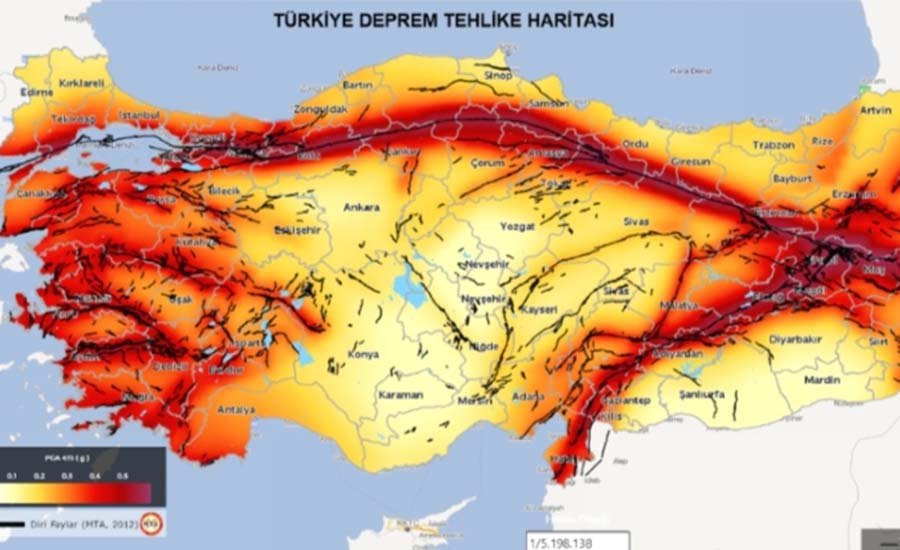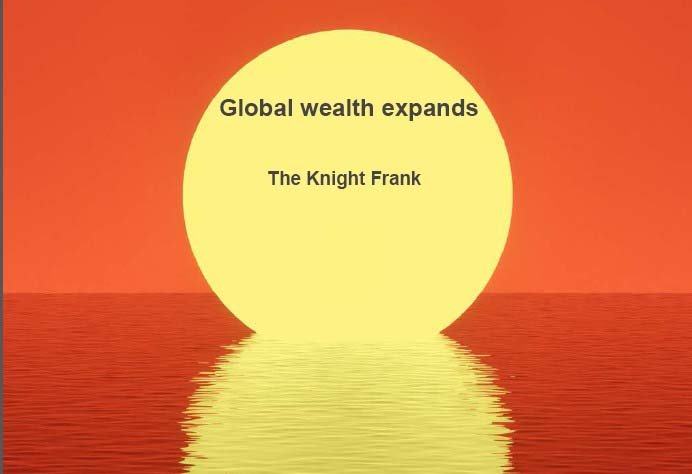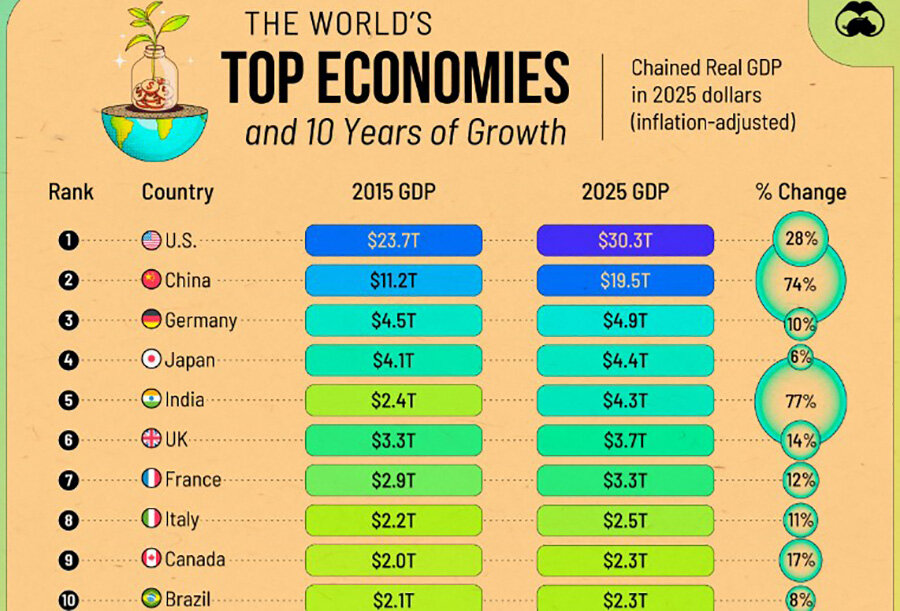читайте также
 Turkey at the Epicenter of Seismic Risk: 100 Earthquakes a Day
Turkey at the Epicenter of Seismic Risk: 100 Earthquakes a Day
 Global Wealth Map: The U.S. Maintains Leadership, Asia Strengthens Its Position
Global Wealth Map: The U.S. Maintains Leadership, Asia Strengthens Its Position
 Money Transfers to Georgia Increase: USA, Italy and Russia Lead
Money Transfers to Georgia Increase: USA, Italy and Russia Lead
 Londoners no longer want to buy property outside the city
Londoners no longer want to buy property outside the city
 Housing in Bosnia and Herzegovina: prices, yields, and risks in 2025
Housing in Bosnia and Herzegovina: prices, yields, and risks in 2025
 Greece boosts tourism revenues thanks to Germany, the US, and the UK
Greece boosts tourism revenues thanks to Germany, the US, and the UK

Over the past decade, the global economy has shifted significantly—not just in GDP volumes, but in the growth rates of major economies. According to Visual Capitalist, between 2015 and 2025, GDP growth among the leading countries varied substantially, and it’s this growth dynamic that reshaped their positions in the global economic landscape.
Top Performers
India emerged as the undisputed growth leader of the decade. Its economy is estimated to grow by 77% from 2015 to 2025, increasing GDP from $2.4 trillion to $4.3 trillion. This performance places India firmly among the top five global economies, solidifying its role as a key driver of global growth.
China ranks second with a GDP increase of 74%. However, the scale matters: in 2015, China’s GDP already stood at $11.2 trillion, and by 2025, it is expected to reach $19.4 trillion. Despite a slowdown compared to previous periods, China remains the world’s second-largest economy.
In third place is Turkey with 59% growth, followed by Indonesia at 51%. The United States rounds out the top five with 28% growth over the decade. Other countries in the top ten fastest-growing economies include South Korea (27%), Egypt (71%), Bangladesh (71%), and Vietnam (65%), reflecting a broader trend of accelerating growth in emerging markets across Asia and the Middle East.
Meanwhile, developed economies showed more modest progress, often affected by stagnation or structural reforms. Japan posted just 6% growth over the decade—one of the lowest among major economies. Brazil grew by only 8%, impacted by the mid-2010s economic crisis and pandemic instability. Russia’s GDP rose 9%. France recorded a 14% increase, the UK 16%, and Germany is projected to grow by 19%.
Outlook for 2025–2026
According to the IMF, global economic growth in 2025 and 2026 is expected to stabilize at 3.3%, below the historical average of 3.7% recorded between 2000 and 2019. While the global economy remains resilient, risks tied to geopolitical tensions, rising debt levels, and inflation persist.
In contrast, the World Bank projects even more restrained global growth at 2.7% during 2025–2026. The strongest gains are expected in African and Asian countries. South Sudan may grow its GDP by 27.2% in 2025, followed by Libya (+13.7%) and Senegal (+9.3%). These high growth rates are largely attributed to low starting bases, post-crisis recovery, and reliance on commodity exports.
Vietnam, India, Bangladesh, Rwanda, and Ethiopia are also expected to maintain strong momentum, fueled by youthful populations, growing domestic demand, and robust investment in infrastructure and manufacturing.
Developed economies, on the other hand, show limited growth potential. The U.S. is expected to grow by 2.3% in 2025, while eurozone countries will average around 1%. China, despite its massive base, will likely slow to 4.5% due to demographic and structural challenges.
Experts warn that global growth will stabilize at a relatively low level, insufficient for sustainable development. In many emerging and developing nations, per capita income will continue to lag behind that of developed countries. Most low-income nations will remain in the same income category through 2050 unless structural reforms and policy changes are implemented at both national and global levels.
Indermit Gill, Chief Economist and Senior Vice President of the World Bank Group, argues that the ambitious development goals of recent decades will not be achieved. Population aging, geopolitical instability, low investment growth, weak productivity, and climate risks will all contribute to an increasingly challenging future. He believes that the next 25 years will require a new roadmap for development success.





